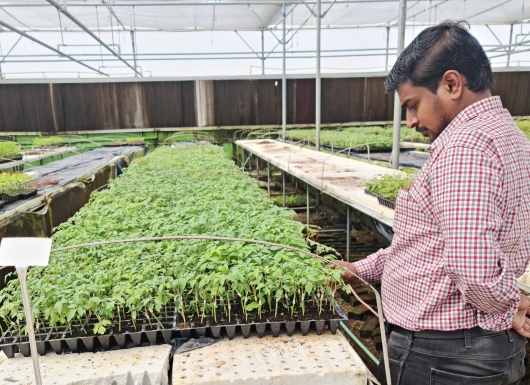Submitter: (ICRISAT)
Vegetable Grafting and Dryland Horticulture" is a climate-resilient solution designed to enhance the productivity and sustainability of horticultural farmers in dryland and stress-prone regions. By grafting high-yielding commercial scions onto hardy, stress-tolerant rootstocks, this approach helps overcome soil-borne diseases (like bacterial wilt and fusarium), abiotic stresses (drought, salinity, extreme temperatures), and declining soil health.

This solution has shown remarkable success in the Rayalaseema region of Andhra Pradesh, with trials covering over 650 ha and over 65 lakh grafted seedlings distributed. It is well-suited for semi-arid, arid, and rainfed regions in states like Maharashtra, Karnataka, Odisha, Telangana, and Madhya Pradesh, where water scarcity and soil degradation are common. It is also applicable in peri-urban zones and in areas with light-textured soils, where vegetables suffer from frequent replanting failures due to disease. With appropriate rootstock-scion combinations, it can be expanded to other parts of South Asia and Sub-Saharan Africa facing similar agro-ecological stress.
Vegetable grafting is highly scalable due to its adaptability across solanaceous and cucurbitaceous crops, regions, and existing nursery systems. It has been successfully implemented through Centres of Excellence and can be expanded via decentralized nurseries led by trained farmers, youth, and SHGs. Adoption requires quality rootstocks, localized grafting protocols, hands-on training, and institutional support. With active involvement of ICRISAT, state horticulture departments, and private partners, this technology is ready for wider dissemination in dryland horticulture programs across India.
Rohan Khopade: rohan.khopade@icrisat.org
Gajanan Sawargaonkar: gajanan.sawargaonkar@icrisat.org